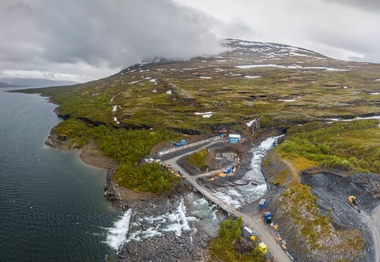Hydro and Solar Power Supply Electricity for Tunnel Operation
ASFINAG in Carinthia will begin implementing a further major expansion of renewable energy sources in the fall of 2023, with the aim of being self-sufficient in electricity by 2030. Work on the expansion of the existing photovoltaic systems at the Villach and Klagenfurt sites is scheduled to begin in November. Also in late autumn, construction work will start on a small hydropower plant directly at the Karawanken Tunnel, which will supply up to a third of the tunnel‘s energy requirements. And in spring 2024, another tunnel will be equipped with a solar power installation. A new system will be installed at the east portal of the Ehrentalerberg Tunnel in Klagenfurt to supply the infrastructure with renewable energy.
“The energy transition can only succeed with a consistent expansion of photovoltaics, hydropower and wind power,” says ASFINAG CEO Hartwig Hufnagl. “With this initiative in Carinthia, we are taking another important step towards achieving our goal of being self-sufficient in electricity by 2030. We will therefore follow up with many more such projects.”
Solar Power Sytem for Ehrentalerberg Tunnel
A new solar power system will be installed at the east portal of the Ehrentalerberg tunnel from spring 2024. More than 2600 solar electric panels with a total output of 1100 kilowatts peak will ensure that the tunnel can be operated in an energy-neutral manner in future. Completion is scheduled for the end of 2024.
Diverted Karawanken Mountain Waters Supply Electricity
Construction work on ASFINAG‘s third small hydropower plant has already started in 2023. Normally, tunnel seepage water is diverted from a tunnel without being utilised. In the case of the Karawanken tunnel, all this mountain water will be collected and channelled to the north portal, where it will be used to generate energy in a hydroelectric power plant. The mountain water is discharged very evenly throughout the year, which means that it can be expected to operate continuously for 60 years or more. The output of the power plant will be around 470 megawatt hours, which is as much as around 100 single-family homes need per year. The electricity generated will be fed directly into the tunnel. Around 30 per cent of the electricity required – not including ventilation – can be covered by hydropower in future.




